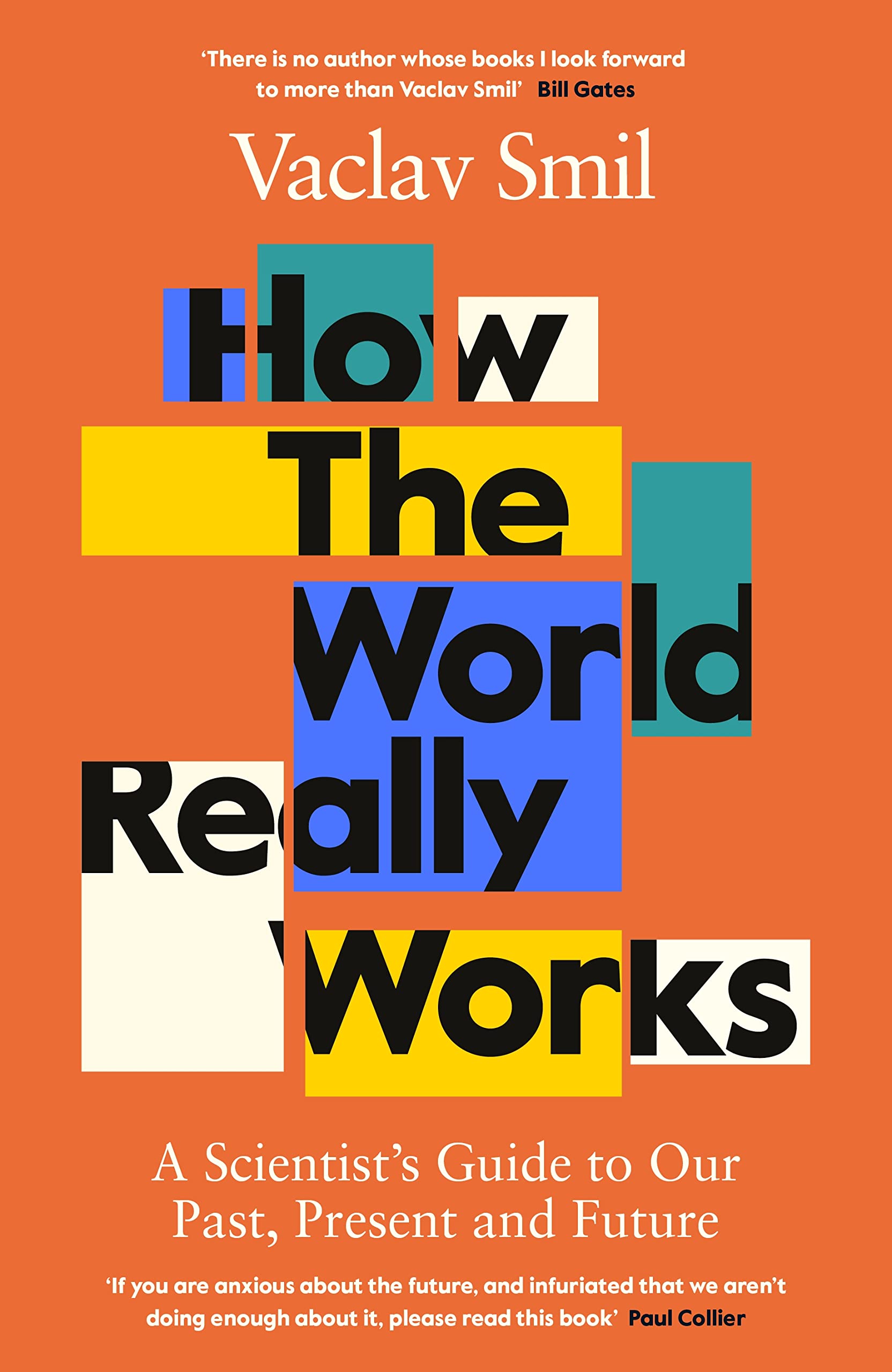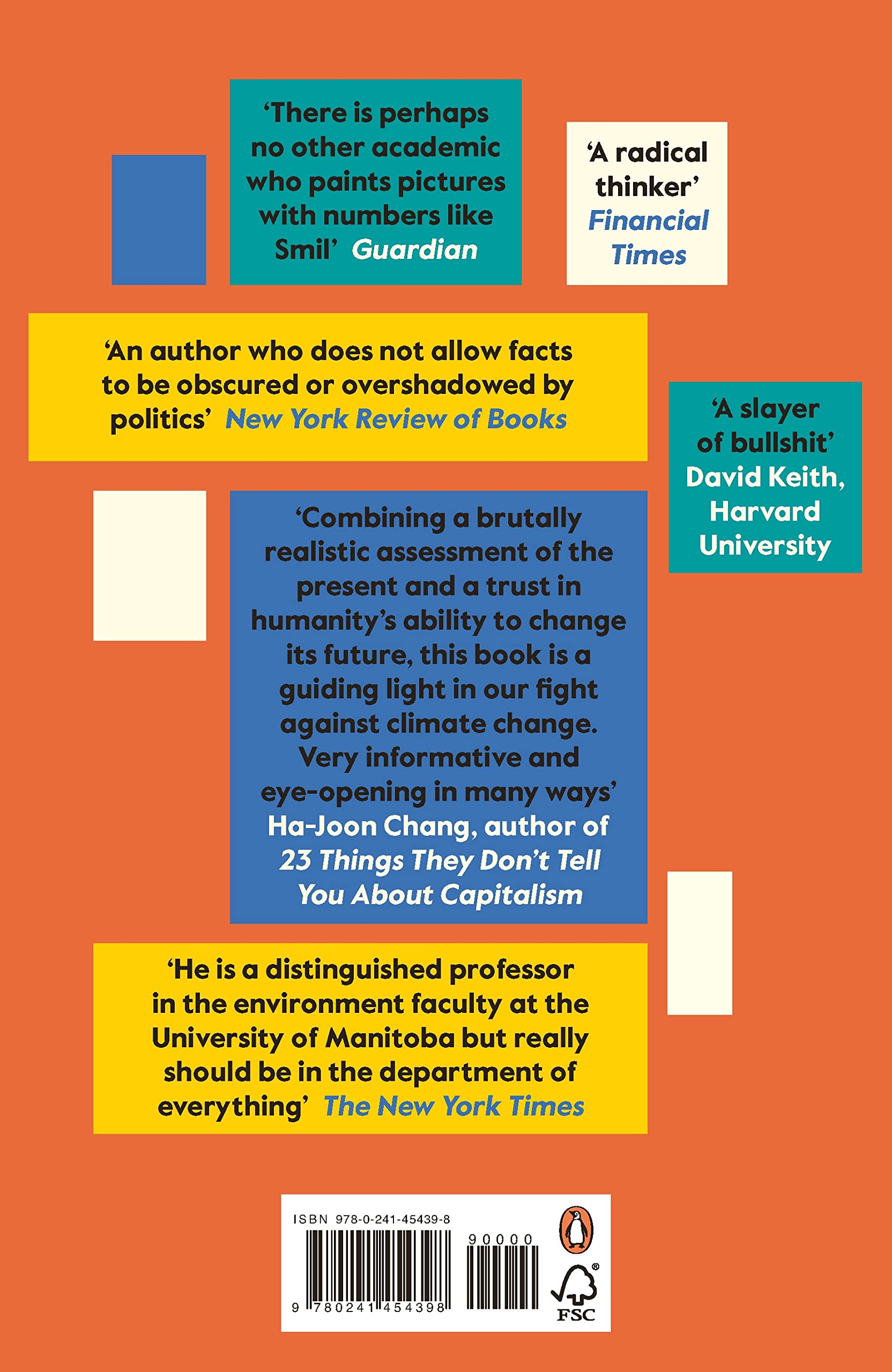


Vaclav SmilHow the World Really Works: A Scientist’s Guide to Our Past, Present and Future
M**T
Explains very well the four pillars of our civilisation
This author gives in his book what are the four pillars of our civilisation: concrete, steel, ammonia and plastic. It explains in concrete terms the reasons for that. Also, it demonstrate these four pillars depend heavily on fossil fuel.The author also defines what is the ``environment'' on our planet and he explains in simple and concrete terms the root cause of the global warming.It should be noted that all facts and figures presented in the book are based on science. The author is very clear in declaring at the beginning of the book that he is NOT a guru that knows it all.
A**N
Excellent reality check on fundamental bottlenecks that occur in the material world
Often these days it seems there is much motivated talk of the great changes that humanity must undertake to adjust its behavior to influence the biosphere less without an appreciation of what that would truly take. The motivated talk is not without good intention, nor should it be dismissed because there are aspects which are unrealistic. Nonetheless to get a more honest picture of how great change can truly take place from a bottoms up perspective in our material world one should read How the World Really Works to appreciate the complexity we really face and the many bottlenecks which we have no current solutions to.Vaclev Smil does not limit himself to narrow questions in this book but instead tries to take a step back and appreciate the problems humanity faces and reflect on how to think about solution forming. The book is not optimistic or pessimistic and attempts to be a scientific realist about the current trajectory of the biosphere and what can be done given the material requirements of the population base. The author starts out by highlighting the fundamental differences between exponential growth in tech hardware and logistic like growth in most material economics, in particular the challenges to further productivity gains in energy production, agricultural yields while the roadmap for further density increases in semiconductors can be clearer and we should not get confused about the inability to advance material sciences the way miniaturization has done elsewhere. The author starts with the critical ingredient to human progress, energy. The main observations are around our inescapable need for fossil fuels. The statistics on alternative energy proportion going up while absolute demand for fossil fuels still increases or at best remains flat highlight how we have not solved our diversification problem and one can draw the quick inference that more wind power for Germany wont solve their gas deficiency. The reconstruction of our energy infrastructure to support a non fossil fuel world is currently a complete fantasy. The author moves onto food and highlights there crop yields over time and how real growth in yield was really catalyzed by the growth of fertilizers dependent on the Haber-Bosch process. This is another massive energy drain highlighting that mass food production and further scale is completely dependent on further energy availability and the yields from moving away from nitrogen fixing would require an order of magnitude more arable land for farming. The author then starts to focus on material production with the likes of steel, cement and overall structures required for human habitation and how these cannot be imagined away. He also discusses the growing risks humanity faces and touches about the pandemic. The author does not highlight the challenges of going to carbon neutral as an excuse to do nothing and is deeply worried about the irreversibility of our actions on the biosphere, as such the author discusses how we are affecting the environment and what the subsequent consequences are of those changes. In putting this together the author tries to give perspective that rising tides wont be the end of humanity nor will tech solve our material constraints and that we need to be completely realistic about the challenges we face so that we start to work on honest solutions to the problems we are causing.All in all How the World Really Works does a good job at framing the problems humanity faces in scale. This is not a political book on right or wrong but a calculated book on the quantities involved and the material constraints on inputs and outputs. This should very much be understood by those framing policies that are intended to be effective and the book is essential reading for those who want to understand this issues better. Both informative and interesting, definitely a good book to gain the proper context to think about what needs to be done and how it can be done.
E**R
Understanding Our Decarbonizing Reality
In How the World Really Works, Vaclav Smil puts into perspective our dependence on fossil fuels and fossil carbon combustion in terms of size. Throughout seven aspects of life (chapters): Understanding Energy, Food Production, Our Material World, Globalization, Risks, the Environment, and finally, to understand the "Future" he discusses four main materials modern civilization heavily depends on ammonia, steel, concrete, and plastic—each reliant on fossil fuels for production." …. in just two years - 2018 and 2019 - China produced nearly as much cement (about 4,4 billion tons) as did the United States during the entire 20th century (4,56 billion tons)." p98We learn much about global food, crops, or fertilizer production and compare the carbon footprint of bread, tomatoes, chicken, or seafood. However, the dependency of food security on energy supply will last, and we seriously must consider the management of food losses and waste. Smil contextualizes the globalization of traded goods, which reached a turning point in the mid-2000s and currently reorganized supply chains for more resilience. He discusses how post-1950 technical advances facilitated a significant expansion, with China emerging as a dominant player – expansion of goods but also migrants."And despite the impression created by media reporting, the worldwide frequency of violent conflicts and the total number of their casualties have been declining for decades." p.135He also addresses risk management linked with numbers and probabilities, risk perception, and irrational fears. Environmental challenges require effective management of our natural resources.„… of all the risks we face, global climate change is the one that needs to be tackled most urgently and effectively. And there are two fundamental reasons why this combination of speed and efficacy will be much harder to realize than is generally assumed.“ p.224Smil offers negative and positive effects of global warming such as agricultural intensification or shortening of trees‘ lifespans as well as the fact that some crops will increase their water use efficiency. Smil counts on human achievements, creativity, and ingenuity anticipating our future adaptability and innovation.„Catastrophists have always had a hard time imaging that human ingenuity can meet future food, energy, and material needs - …“ p210A compelling and very dense read; very well-researched with great references and orders of magnitude. It reminds us to reconsider our reliance on fossil fuels and explore sustainable pathways for the future. A must-read!
J**N
Brilliant piece of work
Accessible, easy to read and understand.A great book that skewers the fallacy that the world is ready to ditch fossil fuels any time soon.Makes you a real pain when dealing with the besandalled and dreadlocked, teenagers and demonstrators.
M**X
Excellent
Excellent. Donne une très bonne perspective sur le fonctionnement du monde en 2020.
Trustpilot
3 weeks ago
2 weeks ago